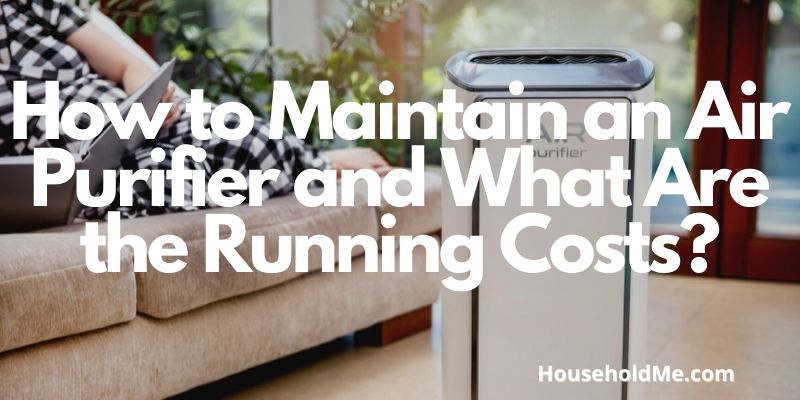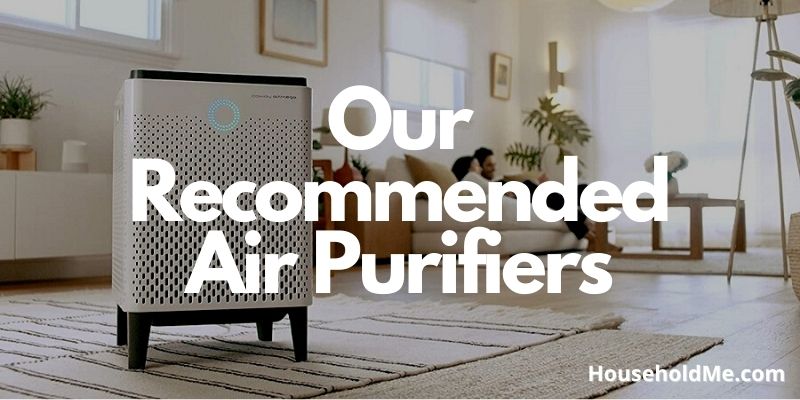Everyone now has an air purifier, so we need to talk about how to keep it running at its best. Tips and guides are in this list. And for those of you who don’t own one yet, it’s time you start your search for an air purifier.

If you’re worried about how to maintain your air purifier or how much it’ll cost you to run the device in your home, we’ve got you covered. In this Short guide, we’ll show you how to maintain your air purifier how much you could potentially spend to keep it running at its best.
How Do Air Purifiers Work?
An air purifier’s main job is to remove airborne pollutants from the air. It starts with a fan that draws air, which passes through a series of filters, before another fan recirculates the filtered air to every corner of the room.
Air purifiers generally come with at least two filter types to capture as many particles as possible. There’s the pre-filter, the main filter (ideally a True HEPA Filter), and an activated carbon filter for maximum odor absorption. You can also find models with optional air-purifying systems, such as an ionizer that uses electrostatic charge and a UV-C “kill chamber” that destroys microorganisms.
All of the components work together to ensure that the indoor air you breathe at home is as fresh, as odor-free, and as healthy as possible.
Maintaining an Air Purifier
Keeping your air purifier in tip-top shape will ensure that it will continue to snatch particles out of the air. Missing any of the following steps may actually lead to adverse effects, including but not limited to mold growth.
1 | Wiping the Pre-Filter
The pre-filter is typically a large-pored filter or plastic grate that’s supposed to trap the largest particles imaginable (think clumps of dust bunnies and pet hair). However, if the pre-filter becomes too clogged, chances are that the fan will force the accumulated debris into the subsequent filters, causing them to become clogged as a result.
Every day or so, make sure to give the pre-filter a good wipe. Some pre-filters are washable and reusable, but you should consult the air purifier’s instruction manual to see how you should go about cleaning it.
2 | Replacing the Filter
The main filter resides behind the pre-filter. It’s what does most of the filtration work to ensure that tinier particles, such as dust and pollen, don’t get recirculated back into the air. Users should make sure to replace the main filter—whether it’s a True HEPA Filter, activated carbon filter, or otherwise—as frequently as needed.
Failing to do so can lead to mold growth when the accumulated debris mixes with moisture in the air. On average, users should always have at least one replacement filter on hand and replace the old filter once every 6 to 12 months.
3 | Wiping the Air Quality Sensor
Some of the more high-end air purifier models come with a sensor that constantly measures the concentration levels of airborne particles in a room. An air purifier is reliant on a functioning sensor to determine whether to automatically turn its fan on and at the correct speed.
The sensor can become covered in microscopic dust over time, which can lead to unnecessary purifying. Wipe the sensor with a dry cloth once every month or when it’s noticeably covered by a layer of dirt.
How Much Does It Cost to Own an Air Purifier?
For this section, we’ll disregard the cost of the actual air purifier since you can find some that are dirt-cheap or as costly as a robotic vacuum cleaner. There are two main factors that affect total operating costs: filter replacements and energy consumption costs.
- True HEPA Filter + Activated Carbon Filter replacements typically range from $40 to $150, depending on the make and model of your air purifier.
- Assuming you run your air purifier nonstop, you’ll end up paying anywhere from $0.35 to $7.00 in energy weekly.
So, on average, the typical cost range to run an air purifier 24/7 for an entire year is between $58.20 (cheapest filter replacement once per year at lowest energy cost times 52 weeks) to $664 (costliest filter replacement twice per year at highest energy cost times 52 weeks).
The figures above are only estimates, and how much you end up spending depends on a number of factors, such as operating time per week and how polluted your indoor air is.
Of course, you can save a few bucks here and there if you find an air purifier with an air quality sensor, run your air purifier for only a couple of hours every day, and choose a model that’s Energy Star certified.

If you have any questions or comments, please add them below in the comment section. Similarly, please let us know if you spot any mistakes or omissions. Thanks!
